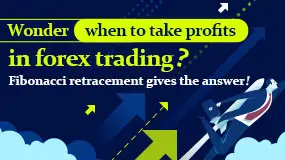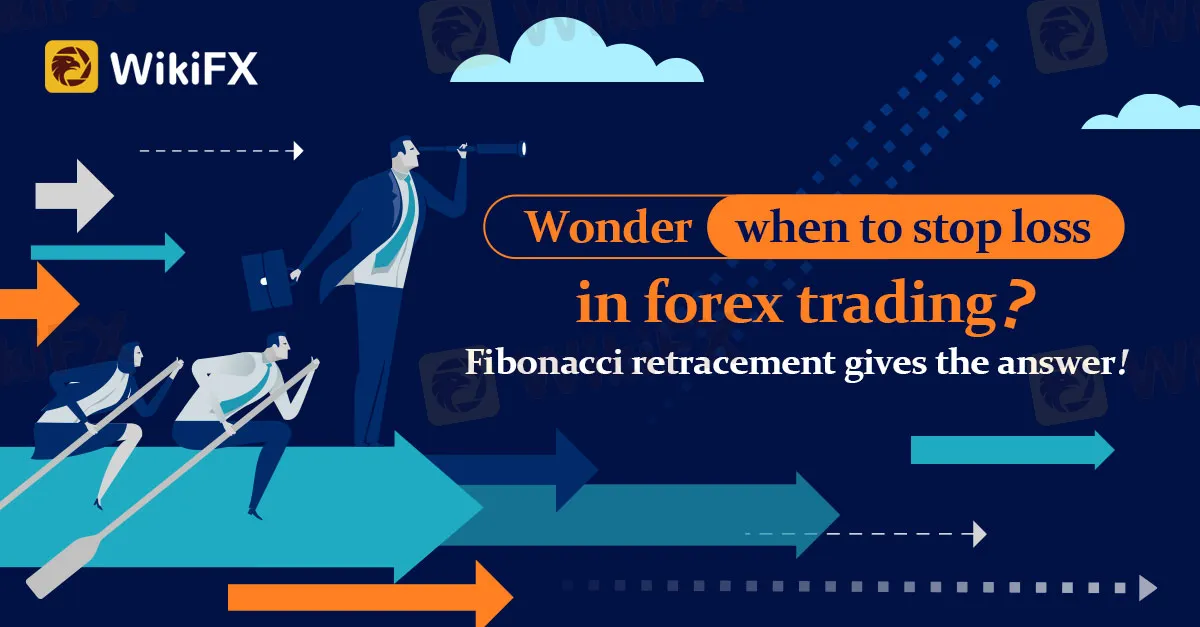 Method #1: Place Stop Just Past Next Fib
Method #1: Place Stop Just Past Next FibThe first method is to set your stop just past the next Fibonacci level. If you were planning to enter at the 38.2% Fib level, then you would place your stop beyond the 50.0% level. If you felt like the 50.0% level would hold, then you‘d put your stop past the 61.8% level and so on and so forth. Simple, right? Let’s take another look at that 4-hour EUR/USD chart we showed you back in the Fibonacci retracement lesson.
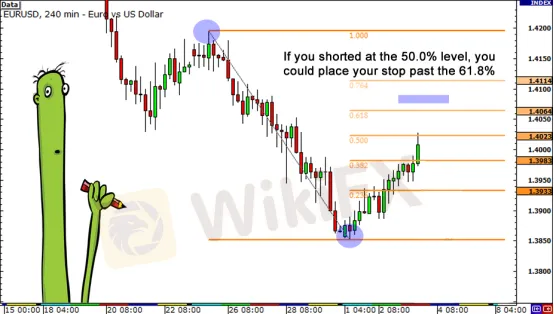
If you had shorted at the 50.0%, you could have placed your stop loss order just past the 61.8% Fib level. The reasoning behind this method of setting stops is that you believed that the 50.0% level would hold as a resistance point. Therefore, if price were to rise beyond this point, your trade idea would be invalidated. The problem with this method of setting stops is that it is entirely dependent on you having a perfect entry. Setting a stop just past the next Fibonacci retracement level assumes that you are really confident that the support or resistance area will hold. And, as we pointed out earlier, using drawing tools isnt an exact science.
The market might shoot up, hit your stop, and eventually go in your direction. This is usually when we‘d go to a corner, and start hitting our head on the wall. We’re just warning you that this might happen, sometimes a few times in a row, so make sure you limit your losses quickly and let your winners run with the trend. It might be best if you used this type of stop placement method for short-term, intraday trades.
Method #2: Place Stop Past Recent Swing High/LowNow, if you want to be a little safer, another way to set your stops would be to place them past the recent Swing High or Swing Low. For example, when the price is an uptrend and you‘re in a long position, you can place a stop loss just below the latest Swing Low which acts as a potential support level. When the price is in a downtrend and you’re in a short position, you can place a stop loss just above the Swing High which acts as a potential resistance level. This type of stop loss placement would give your trade more room to breathe and give you a better chance for the market to move in favor of your trade.
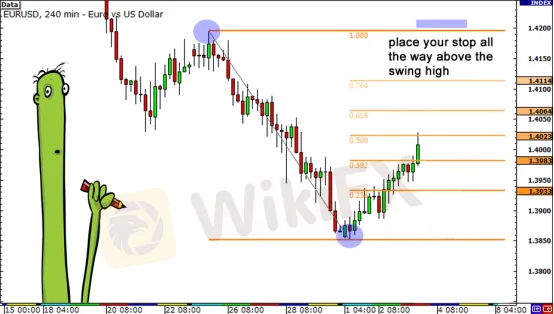
If the market price were to surpass the Swing High or Swing Low, it may indicate that a reversal of the trend is already in place. This means that your trade idea or setup is already invalidated and that you‘re too late to jump in. Setting larger stop losses would probably be best used for longer term, swing-type trades, and you can also incorporate this into a “scaling in” method, which you will learn later on in this course. Of course, with a larger stop, you also have to remember to adjust your position size accordingly. If you tend to trade the same position size, you may incur large losses, especially if you enter at one of the earlier Fib levels. This can also lead to some unfavorable reward-to-risk ratios, as you may have a wide stop that isn’t proportional to your potential reward.
So which way is better?The truth is, just like in combining the Fibonacci retracement tool with support and resistance, trend lines, and candlesticks to find a better entry, it would be best to use your knowledge of these tools to analyze the current environment to help you pick a good stop loss point. As much as possible, you shouldnt rely solely on Fibonacci levels as support and resistance points as the basis for stop loss placement.
Remember, stop loss placement isnt a sure thing.
But if you can tilt the odds in your favor by combining multiple tools, it could help give you a better exit point, more room for your trade to breathe, and possibly a better reward-to-risk ratio trade.

WikiFX App is a third-party inquiry platform for company
profiles.WikiFX has collected 17001 forex brokers and 30 regulators and
recovered over 300,000,000.00 USD of the victims.
It, possessed by Wiki Co., LIMITED that was established in Hong
Kong Special Administrative Region of China, mainly provides basic
information inquiry, regulatory license inquiry, credit evaluation for
the listed brokers, platform identification and other services. At the
same time, Wiki has set up affiliated branches or offices in Hong Kong,
Australia, Indonesia, Vietnam, Thailand and Cyprus and has promoted
WikiFX to global users in more than 14 different languages, offering
them an opportunity to fully appreciate and enjoy the convenience
Chinese Internet technology brings. WikiFXs social media account as
below:
Facebook:
USA Area:https://www.facebook.com/WikiFX.US/
UK Area:https://www.facebook.com/Wikifx.UK/
Nigeria Area:https://www.facebook.com/WikiFX.ng
Twitter:
Areas where English is an official language:https://twitter.com/WikiFX_Eng
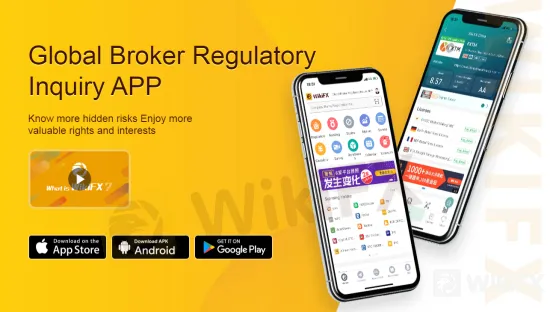
More details about how to download WikiFX App:
Please download WikiFX APP from links below or scan QR code :
iosAppStore: https://apps.apple.com/us/app/fxeye/id1402501387?l=zh&ls=1
Googleplay: https://play.google.com/store/apps/details?id=com.foreigncurrency.internationalfxeye

If you have any questions, please feel free to contact us at wikifx@wikifx.com
Worried about missing out latest trends in the volatile market? WikiFX ‘News Flash’ is here to help!
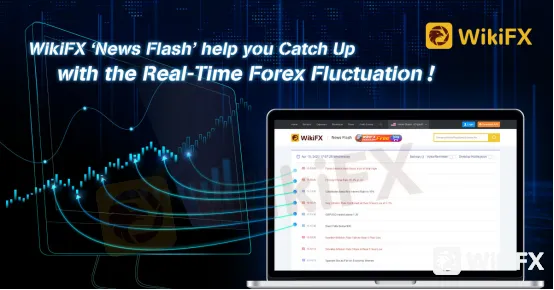
With 24-hour real-time update of forex market data by minute, you
can seize the opportunity of every bullish market! Bookmark the link
below and follow the market trends immediately!
UK Area:https://live.wikifx.com/uk_en/7x24.html
USA Area:https://live.wikifx.com/us_en/7x24.html
Nigeria Area:https://live.wikifx.com/ng_en/7x24.html

Wiki Forum Forum Function:
In order to help more investors, WikiFX has launched the WikiFX
Forum forum, which aims to provide urgently needed and professional
services to Nigerian forex investors.
The exposure function of “WikiFX Forum” includes the following features:
1: Allow investors who have been defrauded by illegal broker to complain directly in the forum (as shown in the screenshots)
As long as there is sufficient evidence, a review panel and an
executive team will contact the broker to discuss the complaint or
expose it directly through the media. Here are the exposure channels:
2: Block low score brokers from entering the forum
3: Monitor suspicious communication in real time, and directly spot and deal with suspicious fraud;
4: Negotiate with highly reliable brokers selected by WikiFX in the secure environment of WikiFX Forum.
WikiFX APP exposure channel: https://activities.wikifx.com/gather/indexng.html
Information page to understand forex scam and exposure channel: https://activities.wikifx.com/gather/indexng.html
Website exposure channel: https://exposure.wikifx.com/ng_en/revelation.html














